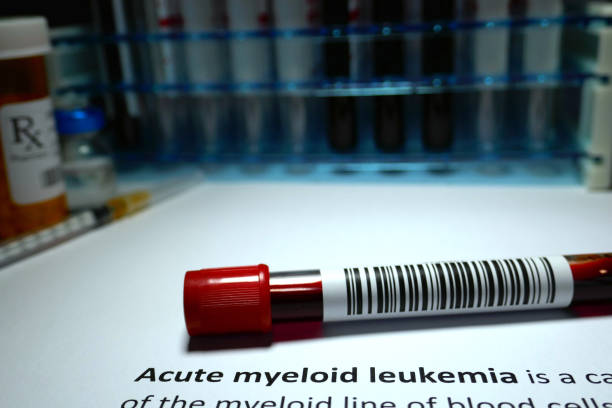Emerging and Effective Treatments for Leukemia
Leukemia, a cancer affecting the blood and bone marrow, continues to pose significant challenges worldwide. It is characterized by the rapid production of abnormal white blood cells that crowd out healthy blood cells, leading to a range of health complications including increased susceptibility to infections, anemia, and excessive bleeding. Leukemia can affect individuals of all ages and is typically diagnosed through routine blood tests. Traditionally, treatments such as chemotherapy and radiation have been the mainstay, but these approaches often come with severe side effects and may not always provide a permanent cure. However, thanks to significant advancements in medical research, new therapies are emerging, offering more effective and less harmful alternatives for leukemia patients.
Leukemia, a cancer affecting the blood and bone marrow, continues to pose significant challenges worldwide. It is characterized by the rapid production of abnormal white blood cells that crowd out healthy blood cells, leading to a range of health complications including increased susceptibility to infections, anemia, and excessive bleeding. Leukemia can affect individuals of all ages and is typically diagnosed through routine blood tests. Traditionally, treatments such as chemotherapy and radiation have been the mainstay, but these approaches often come with severe side effects and may not always provide a permanent cure. However, thanks to significant advancements in medical research, new therapies are emerging, offering more effective and less harmful alternatives for leukemia patients.

Targeted Therapy: A Precision Approach to Treatment
One of the most exciting breakthroughs in leukemia treatment is targeted therapy, a highly focused approach that attacks cancer cells while minimizing harm to healthy cells. This form of treatment uses drugs that specifically target proteins or genes unique to the leukemia cells, disrupting their growth and survival. A particularly effective class of targeted therapies for leukemia is tyrosine kinase inhibitors (TKIs). These inhibitors work by blocking the signals that promote the proliferation of cancerous cells, particularly in chronic myeloid leukemia (CML) and other forms of leukemia that exhibit abnormal kinase activity. TKIs, such as Imatinib, have transformed the treatment landscape, offering patients a more effective treatment option with fewer side effects than conventional chemotherapy.
Immunotherapy: Empowering the Immune System to Fight Leukemia
Another promising treatment is immunotherapy, which boosts or modifies the body’s immune system to help it recognize and fight leukemia cells more effectively. One revolutionary form of immunotherapy is CAR T-cell therapy. In this approach, a patient’s own T-cells are extracted, genetically modified to target leukemia cells, and then infused back into the patient’s body. This technique has shown remarkable results, particularly in acute lymphoblastic leukemia (ALL) and other blood cancers, offering long-lasting remissions for some patients. The FDA has approved CAR T-cell therapies for both pediatric and adult leukemia patients, marking a significant step forward in leukemia treatment. Immunotherapy also includes monoclonal antibodies, which are engineered to specifically bind to cancer cells and stimulate an immune response against them.
Stem Cell Transplant: Rebuilding the Blood System
Stem cell transplantation remains a key treatment for certain types of leukemia, especially when the disease is resistant to other therapies. Stem cell transplants involve replacing the patient’s diseased bone marrow with healthy stem cells from a donor or from the patient themselves. The transplanted cells begin to produce healthy blood cells, effectively replacing the cancerous ones. Allogeneic stem cell transplants, where the cells are donated by another person, are often the most effective treatment but carry the risk of complications such as graft-versus-host disease (GVHD), in which the donor cells attack the recipient's body. Despite these challenges, advances in matching techniques, immunosuppressive medications, and post-transplant care have improved the success rates of stem cell transplants, making them an increasingly viable option for patients with advanced or relapsed leukemia.
Genetic Testing: Personalizing Treatment Plans
Recent advancements in genetic testing have significantly enhanced the way leukemia is treated. By analyzing the genetic mutations in leukemia cells, doctors can tailor treatments to target the specific genetic alterations driving the disease. This personalized approach ensures that patients receive the most effective drugs based on their unique genetic profiles. Genetic testing also plays a crucial role in identifying patients who may be at higher risk of relapse or complications, enabling early intervention and more proactive management. The ability to sequence cancer genomes and identify actionable mutations has opened new avenues for precision medicine in leukemia treatment.
Advancements in Chemotherapy and Radiation Therapy
While newer treatments such as targeted therapy and immunotherapy have gained prominence, chemotherapy and radiation therapy are still important components of leukemia treatment, particularly in aggressive forms of the disease. However, significant improvements have been made in these traditional treatments. Newer chemotherapy agents are designed to specifically target leukemia cells, reducing their toxicity to normal tissues and improving patients' tolerance to the drugs. Advances in radiation therapy have also made it possible to precisely target cancerous areas, minimizing the damage to surrounding healthy tissue and improving treatment outcomes.
A Brighter Future for Leukemia Patients
In conclusion, the landscape of leukemia treatment is undergoing a remarkable transformation. With the advent of targeted therapies, immunotherapy, stem cell transplants, and genetic testing, patients now have access to a range of effective treatment options that offer the potential for higher survival rates, fewer side effects, and, in some cases, long-term remission. These innovations are paving the way for a future where leukemia can be more effectively managed, and a cure may be within reach. As ongoing research continues to explore new therapies and refine existing ones, the outlook for leukemia patients is brighter than ever.